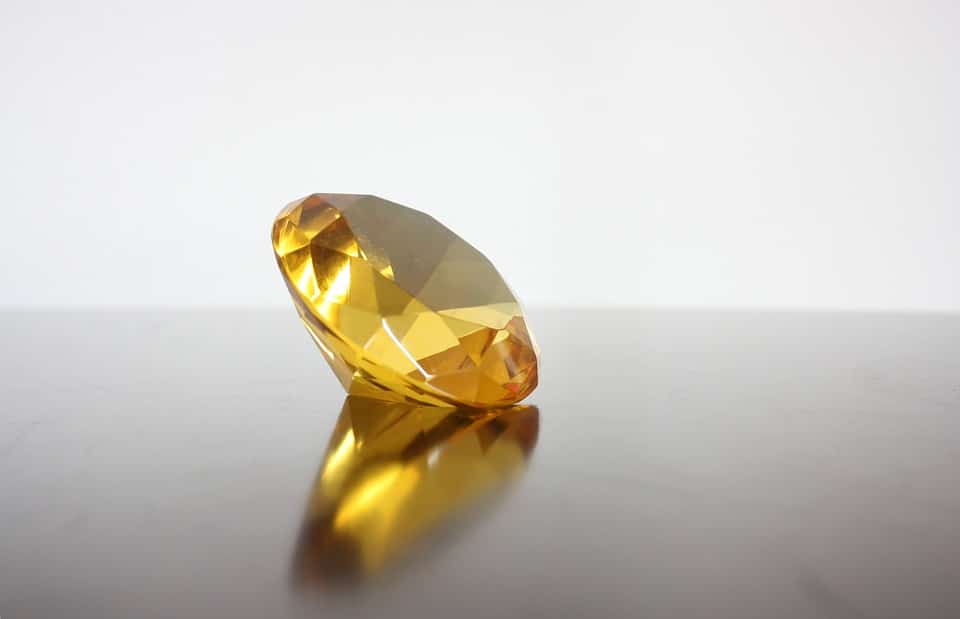One needs to have an eye for curtained beauty to work with diamonds. Unless talented hands cut and polish them to such finesse as to reveal their secret shine, these precious stones could very easily remain in dark obscurity. Sometimes, they blend so well with the indistinguishable background that the first man to pick them up will come with no better words to name them than ‘The Unnamed Brown’. This is what’s been written on the birth certificate of the Golden Jubilee Diamond the first time it saw daylight.
That was not so long ago which, sadly, makes our story of this star diamond a bit short on the twists, curses, murderous plots, and historical biddings underscoring the world of unique gems.
The Golden Jubilee Diamond – The Story of the Ugly Duckling of Gems
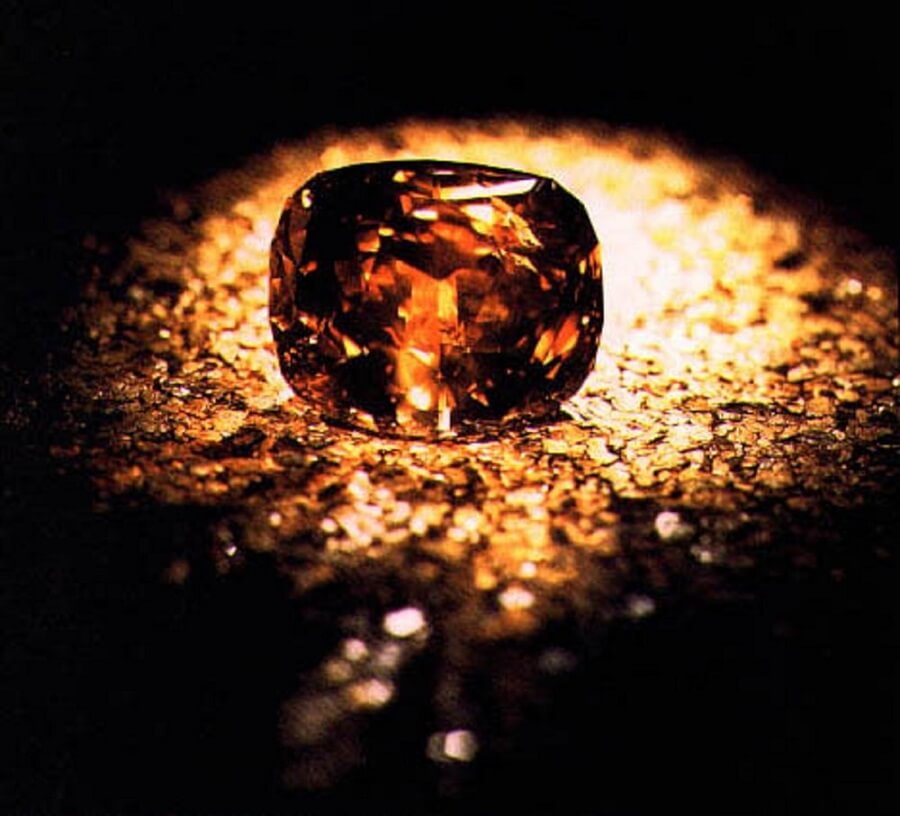
Only three decades have passed since the golden jubilee diamond had been unearthed from one of the most high-profile mines in history. In the 1900s, the Premier Mine in South Africa must have worked at full tilt. In the course of time, it spurred over 750 precious stones with more than 100 carats and remains to this day the only noteworthy source of blue diamonds.
The blue ground of this mine is distinguishable not only for its prolific outpouring of precious stones but most of all for their size and quality. Thus, based on its blue-blooded origin, we can safely say that the Golden Jubilee diamond moves in high circles. Other big names on the diamond VIP list trace their origin to this carrot shaped volcanic pipe. Among the most notable, we name the Taylor Burden Diamond, the Premier Rose, the De Beers Centenary, and last but certainly not least, the Cullinan Diamond.
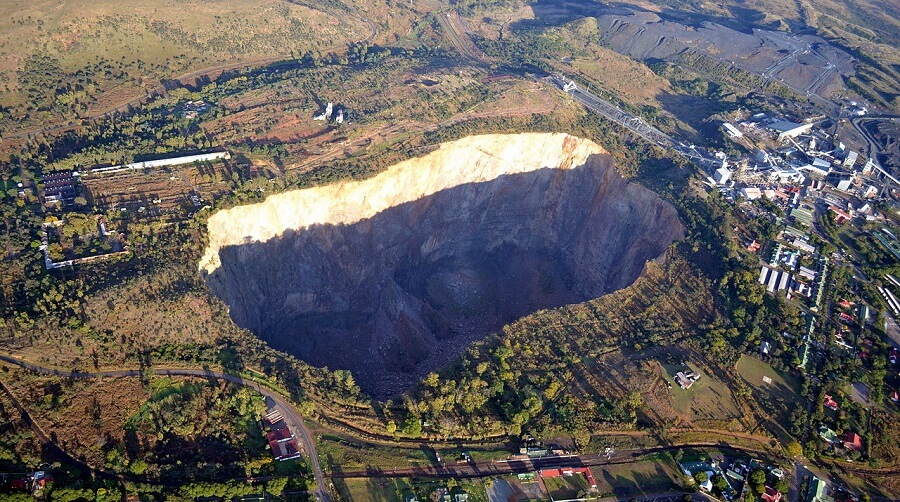
You’ve heard of the latter, the largest rough diamond of quality ever found and a British Royal Treasure. If it still doesn’t ring a bell, here’s our post on it to refresh your memory. When the Golden Jubilee Diamond surfaced in 1985, it didn’t outsize or outshine many diamonds of the previous batch. Its color was a murky brown and it weighed an impressive, but not unparalleled 755.5 carats, or 151 grams.
However, the dice were rolling in its favor. By then, the heavyweight Cullinan Diamond had been cut into many smaller polished stones, with the most impressive, the Great Star of Africa or Cullinan I, still tipping the scales at 530.4 carats.
After a cut worthy of everlasting praise, the newbie on the scene, the Unnamed Brown, found itself contender-free. It weighed 545.67 carats, or 109.13 g. 15.37 carats more than the biggest Cullinan.
At first sight, 15 carats might not seem like a meaningful difference when we’re dealing in the hundreds, but every inch counts when world titles are at stake.
The Fire Rose Cushion Cut
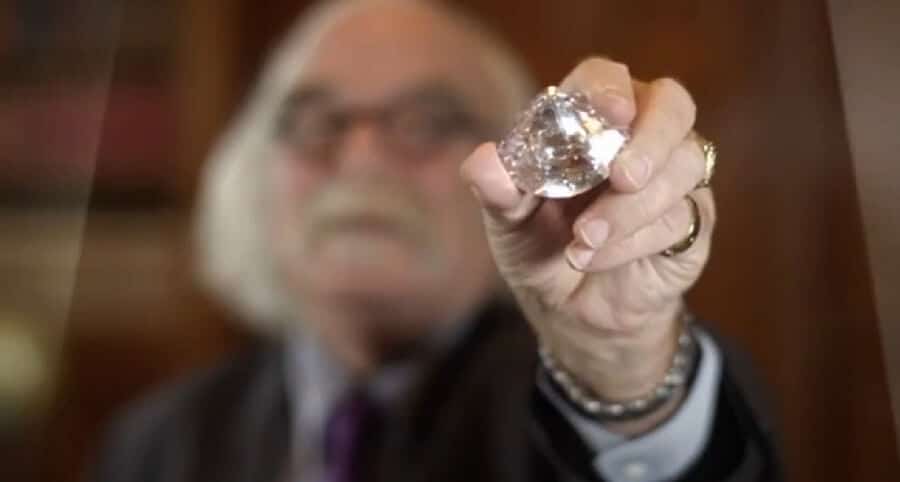
De Beers company, which had taken control of the Premier Mine after the end of First World War, entrusted the Golden Jubilee to Gabriel Tolkowsky for cutting.
Gabriel Tolkovsky, a six generation diamond cutter and the great nephew of Marcel Tolkovsky, who had been deemed the father of the modern round brilliant cut, had already received a commission from De Beers to work on the 273.85 carats Centenary Diamond. His techniques were in the avant-garde of the diamond cutting technology, and the Polish cutter would further polish them by devising experimental and ingenious tools. He used the newly acquired knowledge from working with the colorless D-flawless Centenary on the Unnamed Brown.
The cutter was nothing short than daring. The yellow-brown diamond presented deep scars, cracks, and inclusions. Gabi Tolkovsky tried to avoid fracturing the stone as to not render it useless. To that purpose, he designed an underground room soundproof from the tiniest vibrations. Two years he toiled on the gem-quality stone. And it wouldn’t be an overstatement to say the Golden Jubilee was born again in his hands.
In 1900, the diamond had its first appearance on the world scene, when De Beers company took it on tour as the champion stone to lead their centennial celebrations. After all, the Unnamed Brown wasn’t the ugly duckling anymore. It had matured into a 545.65 carats beauty, shining through a brilliant cushion cut and 148 facets. The color was now graded as ‘fancy yellow-brown’. When interrogated about it, Gabriel Tolkovsky called its technique ‘the fire rose cushion cut’.
We can only assume the cutter knew how to tempt the diamond into revealing its many faces. Usually, a rose cut releases only up to 24 facets, with the stone’s shape resembling a rose bud with a flat bottom and a crown in the shape of a dome. However, the Golden Jubilee rose above anyone’s expectations.
A Place Among Royalty
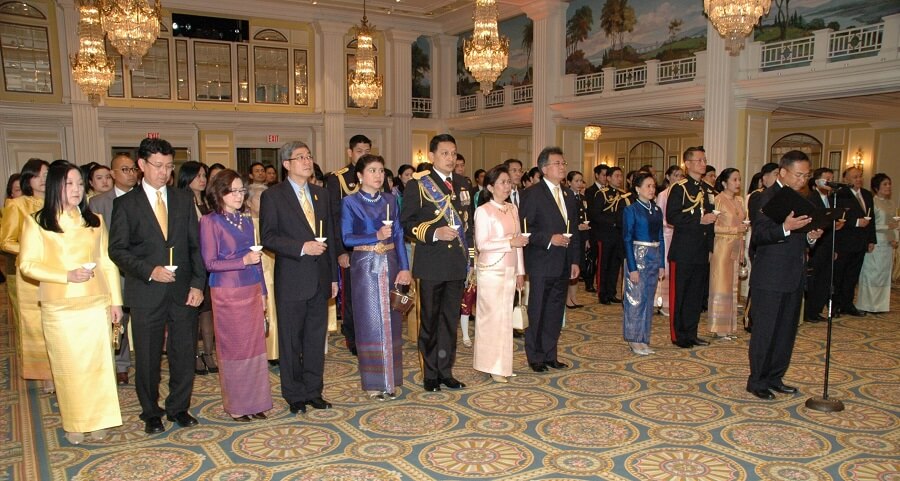
Displaying such brightness made the Golden Jubilee diamond worthy of royalty. While being toured around the world by De Beers, it caught the attention of the Thai diamond-investors. So it goes that ten years after it had been unearthed, the company sold the precious gem to a group led by Henry Ho of Thailand, head of the imposing Jewelry Trade Center in Bangkok.
Then followed a trip to the Vatican, where Pope John Paul II gave the diamond a Papal blessing. Afterward, it was the turn of both the Supreme Imam and the Supreme Buddhist Patriarch in Thailand to bless the stone. All these ceremonies were conducive to make the diamond presentable to the King of Thailand. As his Golden Jubilee was approaching, the stone was meant as a gift to celebrate the 50th anniversary of his coronation.
1997 was probably not the most auspicious time for such extravagant gestures. Thailand had been experiencing financial hardships for years. News that their leaders were squandering millions on jewelry would only irritate the people and harm the popularity of elected politicians. The government decided to avoid having to account for their free-spending by lying. so they initially reported the ‘Unnamed Brown’ was nothing more than a golden topaz of an impressive size, of course.
The truth was revealed in the end, but it did not matter anymore. At first, the Golden Jubilee diamond was supposed to take its place in the King’s royal scepter. Later, it was planned to mount in the royal seal of Thailand. Nowadays, the Golden Jubilee Diamond has an honorable seat among the Crown Jewels of the Royal Family of Thailand, always under heavy guard.
The Worth of the Golden Jubilee Diamond?
There is no actual price tag attached to the Golden Jubilee Diamond. However, there are estimations. The stone is valued at 4 to 12 million dollars. If ever auctioned, it would probably score a much higher price. It is, after all, the Golden Jubilee, the one of a kind Unnamed Brown.

